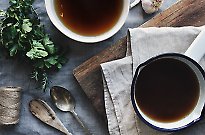
Understanding the common winter cold

Arm up against cold and flu season.
When the winter chill bites at our extremities, the sniffs, coughs and fevers are more than ready to take us down. Here, Lisa O'Neill delves into ways to beat the winter cold.
Considering cold and flu strains mutate and change each year, the defence strategy our immune system had in place following last year’s onslaught is readily outsmarted by these new soldiers. And each year, they march in at full strength as the temperatures drop and the sun knocks off much too early. According to research by the American National Institutes of Health, the peak of rhinovirus (aka colds) and influenza (or flu) in winter is due to the colder temperatures and reduction in air humidity, which increase virus transmissions and their survival rates.
Another wintry woe is sunshine being regularly missing in action and taking with it that lovely dose of vitamin D it brings. While vitamin D is well known for its contribution to bone strength, it also reduces our susceptibility to infections. We’re also indoors more, hiding out from the weather and consequently in closer proximity to others who can pass on any germs they might have. So kind.


